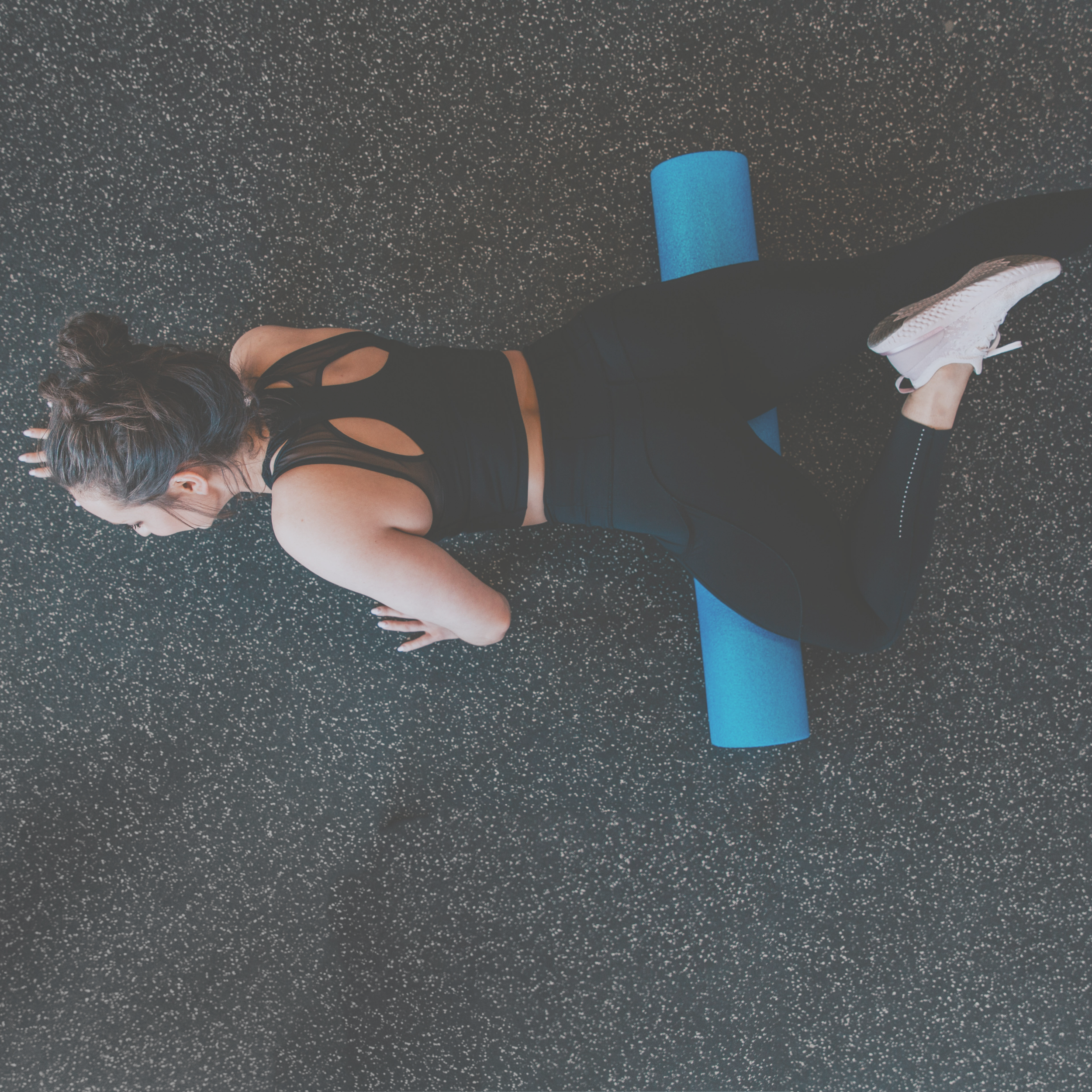Wait, So Foam Rolling Does Increase Range of Motion Over Time?
We know it can change short term ROM, but does it change long term ROM?
By: Dylan Dacosta
6 minute read
Spark Notes:
Foam rolling has been shown to increase range of motion short term, but a recent meta-analysis showed that it can actually increase range of motion in the long term too.
Trials less than equal to or less 4 weeks in duration didn't have a significant impact on range of motion, but trials that were longer than 4 weeks did.
Hamstrings and quads responded well too foam rolling, but the calves didn't as much (more context below).
If you plan to foam roll to increase range of motion over the long term, most protocols in this paper included 2–3 sessions per week of around 60–180 seconds of rolling for a given muscle.
I’ve talked about the effects of foam rolling on range of motion before, which you can read here. In short, there is plenty of evidence to show foam rolling yielding positive outcomes for range of motion acutely, but it tends to revert back rather quickly (30 minutes in this example).
Now, the question is, will foam rolling over a longer period of time lead to actual gains in range of motion? Or is it all just a momentary gain?
A new meta-analysis sought to examine this.
11 studies were compiled and included studies equal to or longer than 2 weeks, in “healthy” participants, were controlled trials, and had a control group not doing a different modality (such as stretching).
Overall, foam rolling led to significant increases in range of motion when compared to the controls. The effect size favouring foam rolling was a moderate(according to how they conducted their stats) effect of a 0.82 standardized mean difference between foam rollers and controls. The confidence interval was 0.32–1.32 as well, so there was a wide range of outcomes. But that wide range is largely from the Le Gal et.al paper that you can see as a huge outlier in the graphic below.
Squares are means from different studies. The bottom is the pooled effect showing a moderate effect in favouring foam rolling.
As you can see above, all of the studies gave at least a slight nod in favour of foam rolling, although only the bottom 4 had significant effects on their own. The top 7 studies all had mean outcomes that favoured foam rolling, but weren’t significant.
In the sub-analysis, it was shown that only interventions lasting longer than 4 weeks elicited significant and even meaningful increases in range of motion when compared to the control groups.
The sub-analysis also showed that while foam rolling impacted the hamstrings, quadriceps and other muscles tested positively, the three studies looking at the calves did not (although the confidence interval on the calf outcome was only from three studies with a very large confidence interval).
Authors speculated the calves may not have seen as much improvement due to:
Less studies on them being included.
Differing methods of testing being used on the ankle ROM studies.
The unique characteristics that make up the muscles/ligaments/tendons of the ankle that could limit the potential of long term increases in ankle mobility.
Calves being less proximal muscles from torso and perhaps harder to place a lot of pressure on when rolling.
I only expand on this because it’s key to know that this data at least, lends itself to the effects of foam rolling on range of motion being perhaps muscle/joint specific.
In other words, don’t expect the same results from foam rolling to be universal on all your joints/muscles.
Lastly, I think it’s worth diving into the protocols. While there was a wide range of methods used in the studies included in the paper, there was one thing I’m confident in saying — most people don’t foam roll this way.
A lot of folks foam roll rather quick and dirty. Maybe 10–20 seconds and then they move on.
The smallest dose in these studies was 20 seconds for 1–2 sets per week, but basically all other studies did much more. Most falling between 60–180 seconds per session on a muscle for 2–3 times per week.
In all my time spent in the gym, I’m confident I haven’t seen many folks roll to this degree.
So if you were going to foam roll in order to try and increase range of motion, based off this data, I’d suggest rolling that muscle for 60–180 seconds for a given muscle/joint about 2–3 times per week.
So, Should You Foam Roll?
This is where I may deflate these findings. My answer would be:
“If you enjoy it and want to.”
The reason is, this data was compared to controls that did nothing. So this doesn’t mean foam rolling is better than other modalities we know can also help increase range of motion. Such as yoga, stretching or even strength training through deep ranges of motion.
In fact, this paper looked at three studies (one not included in the meta) that measured static or PNF stretching in other groups as well. Although it was a small sample size with only three studies, there wasn’t a significant difference in gains of range of motion from stretching or foam rolling — but as I mentioned, that is a not a large amount of data to draw strong conclusions from. Interestingly though, the study that was added did show foam rolling the calves to gain 23% in terms of range of motion from baseline compared to only 12% in the stretching group. This wasn’t statistically significant, but it does show that foam rolling can make an impact on ankle range of motion. Also, a third group in that study did both static stretching and foam rolling and saw no meaningful difference than the other two groups.
The methods in the paper above for both foam rolling and stretching was 2 sessions per week of 30 seconds of rolling or stretching on each calf over 6 weeks. Making this pretty similar to the studies included in the meta-analysis.
With all of this in mind, I think this shows that foam rolling can be as effective as stretching in certain contexts for increasing range of motion over time. Since we also have recent data showing that in certain contexts, strength training can also be as effective as stretching for increasing range of motion, I think personal preference should enter this equation.
If you’d rather foam roll a muscle for 30–180 seconds, 2–3 times per week than statically stretch it, then go for it.
Now if you’re already stretching and strength training through deep ranges of motion, I honestly don’t think foam rolling will do much more for increasing range of motion. So you can still do it if you enjoy, but it just might not be worth it in that context.
Taking all of this into account, It’s fair to say that foam rolling can increase range of motion over the long term. This paper did change my mind on this in all honesty as I used to think it only increased range of motion in the short term.
So if you enjoy this modality and want to increase range of motion, it could be worth a shot. Just remember to apply the protocol suggestions I mentioned. Just don’t roll randomly. If you want to make progress, follow a protocol and stay consistent — just like you would with any other fitness goal.
Cheers,
Coach Dylan🍻
References:
1. The Acute and Prolonged Effects of Different Durations of Foam Rolling on Range of Motion, Muscle Stiffness, and Muscle Strength
https://pubmed.ncbi.nlm.nih.gov/33707988/
2. Foam Rolling Training Effects on Range of Motion: A Systematic Review and Meta-Analysis
https://link.springer.com/article/10.1007/s40279-022-01699-8
3. Effects of Static Stretching and Foam Rolling on Ankle Dorsiflexion Range of Motionhttps://pubmed.ncbi.nlm.nih.gov/30817716/
4. Strength Training versus Stretching for Improving Range of Motion: A Systematic Review and Meta-Analysishttps://pubmed.ncbi.nlm.nih.gov/33917036/




